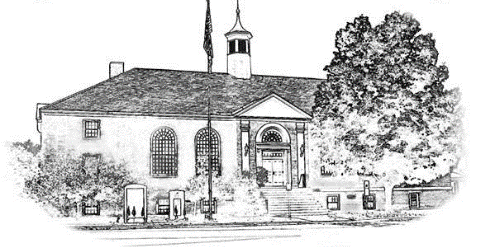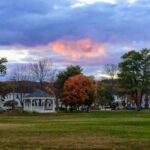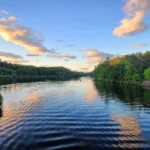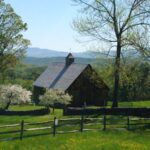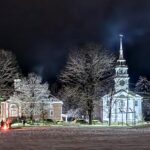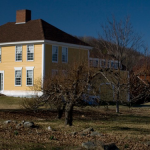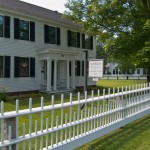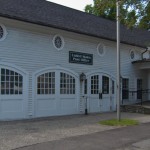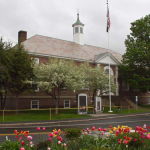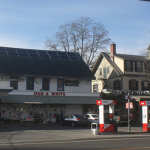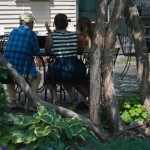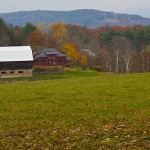1. What exactly is the problem we are trying to solve?
We are trying to deal with an impending federal change in radio frequency use that will make it much more difficult for our Police, Fire and Public Works personnel to communicate with each other and the dispatch center and to improve coverage. Currently, the three departments communicate on a wideband (25 kHz) use of radio spectrum, but even so, there are already significant gaps in coverage due to Norwich’s hilly terrain and the fact that radio transmissions are line?of?sight. The Federal Communications Commission (FCC) has mandated that as of January 1, 2013, such departments must operate on a narrowband (12.5 kHz) use of radio spectrum that is 50% of the wideband use of radio spectrum, making an already compromised situation even worse.
2. What measures are proposed to address the problem?
Communications would be shifted from a transmitter on Hurricane Hill in Hartford, which is not well situated for line?of?sight transmission into Norwich’s valleys, to a transmitter on Hayes Hill in Hanover (Etna) and possibly additional sites for fire coverage at the Hanover Public Safety Facility, Hanover Town Hall, Lyme Fire Station and in Bradford. In addition, a 180? foot tower (with an 18?foot antenna) would be installed on Norwich Town property on ground above the public works facility on New Boston Road. With these changes, all town departments will see a significant improvement in their areas of communications coverage.
3. Why can’t people in Norwich (and elsewhere) get along without cell phones? Is there really a need for this expense?
This proposal is not aimed at providing cell phone service to Norwich residents. It is aimed at improving the radio system that currently serves the Town’s Public Safety and Public Works departments so that they will continue to be able to communicate effectively despite a federally mandated change that reduces the amount of radio bandwidth available to them.
4. Is there any way this change could improve cell phone service?
Possibly. We would be applying for grants to help fund the tower, and if we receive that money there may be restrictions on the tower’s use. If we do not receive grant money or if the funds are not restricted, then looking for a carrier to partner with would be explored.
5. Shouldn’t Police and Fire departments use cutting edge technology rather than radio?
No. The mission of those departments is public safety, and they need to have equipment that has been field tested and is known to be 100% reliable. The technology proposed uses state–of?the?art equipment while maintaining the capability to communicate with other departments and agencies in the area which provide assistance to Norwich and that Norwich assists.
6. Why must the tower be so tall (180 feet)?
In order to solve such coverage problems in the hilly terrain of Norwich, maximum height is essential. The tower and antenna, at a total height of 198 feet, are as tall as possible without reaching the 200?foot level at which the Federal Aviation Administration (FAA) requires aircraft obstruction lighting.
7. Why the location at the public works facility, and not Gile Mountain or a more remote location higher up?
Getting access to Gile Mountain would be virtually impossible due to the location. Construction would be too difficult. Other locations would not offer the coverage needed and may require the town to purchase land.
8. Why is this so important now?
Even in a best?case scenario, we probably wouldn’t be able to get the tower done by Jan. 1, 2013, so the longer we wait, the greater the potential for the bandwidth change to negatively impact public safety communications for an extended period of time.
9. What are the ongoing costs to maintain the tower and the system?
When bids are received on the system we will have a better answer, but the current estimate is less than $5,000 per year. The tower itself has an expected life of greater than 50 years.
10. Where do we find the consultant’s report regarding this project?
http://norwich.vt.us/wp-content/uploads/2012/06/NorwichDraftRadioReport1.pdf. Also, the Interim Town Manager prepared a PowerPoint on the project for a presentation at a Public Forum held by the Capital Finance Committee in December 2011. That PowerPoint contains additional information, including coverage maps, and is available at http://norwich.vt.us/wp-content/uploads/2012/06/CommunicationsPlanPPoint.pdf
11. How high above the trees will the tower be?
The surrounding trees are approximately 60 feet, so about 120 feet above the tree line. There will be a balloon test to visually illustrate the height of the tower (an Act 250 permit is required before the tower can be erected, and a balloon test, in which a balloon is flown at the tower’s height, is
frequently used for Act 250 visual assessments).
12. Can’t we coordinate this with surrounding towns to help offset costs and perhaps mitigate the need for such a large structure?
Yes. We are coordinating with area towns, and the system proposed will use a tower in Hanover that serves communities in New Hampshire. In addition, the Norwich tower may help communities in New Hampshire and some communities north of Norwich and there may be some cost sharing. However, the problem is basically one of topography. Norwich resembles a hand, with the village in the palm and valley “fingers” extending to the north and west. Hayes Hill in Hanover is well located to transmit to locations in the valleys, and the new tower would provide simultaneous transmission to strengthen coverage and make it more reliable. Our studies were not able to find a solution without a tower in Norwich. We are investigating the possibility of expanding the fire system to include existing towers at Hanover Public Safety Facility, Hanover Town Hall, Lyme Fire Station and in Bradford, but this does not change the need for a tower in Norwich.
13. What about fiber optics?
Fiber optics provide land?based communications capability. The three department need mobile capability (for example, for police cruisers, fire
trucks, etc.) and so they need the ability to conduct radio?based communications with mobile transmitters and receivers.
14. What about using multiple smaller towers for radio transmission, linked with a fiberoptic network?
The Interim Town Manager has performed a “ball?park” analysis to estimate the cost of such an approach. To achieve the same level of coverage and reliability with a network of smaller towers would require at least 10 towers, each extending above treetop height, with specialized transmission equipment, batteries and a backup generator, a structure to protect the equipment from weather, and other items. The total estimated cost of such a network is approximately $2 million, or about three times the cost of the single tower, and it is important to note that the estimated cost of the multiple?tower network does not include the fiber?optic network to connect it, acquisition of easements or land for the tower sites, etc.
15. Why can’t the transmitters be mounted on telephone poles on some of the higher roads in town?
This question came up during the Committee’s Public Forum in December. There are two reasons:
1) Radio is line?of?sight, and so the transmitters have to be above the tree line—telephone poles are not that tall.
2) More importantly, this system must be of much higher reliability than the telephone or electric service systems. As all of us in Norwich can testify from experience, those systems are occasionally knocked out by high winds or storms. It is during those times that public safety systems are likely to be most important and most needed. Comparing options, a single tall self?supporting tower, as proposed in the communications plan, seems to provide an optimum solution in terms of minimum impact and maximum reliability.
16. Will the radio waves from the new communications system cause health problems?
No. Norwich’s departments already depend on radio for their communications. All that is happening is that one radio transmitter system is being replaced by another. There is no reason to expect health problems from the new system.
17. To what degree will the new system provide radio coverage in areas of the town that are now “blind spots” for existing coverage?
The clarity of radio communications is measured by the “Delivered Audio Quality” (DAQ) system as follows:
DAQ 1 Unusable. Speech present but not understandable.
DAQ 2 Speech understandable with considerable effort. Requires frequent repetition due to noise/distortion.
DAQ 3 Speech understandable with slight effort. Requires occasional repetition due to noise/distortion.
DAQ 3.4 Speech understandable without repetition. Some noise/distortion present.
DAQ 4 Speech easily understood. Occasional noise/distortion present.
Using the current communications system, once the frequency switch to narrowband (12.5 kHz) takes effect, only 36% of Norwich’s land area will be at DAQ 2 or higher. With the proposed new system, 84% of the town’s land area would be at DAQ 3.4 or higher.
